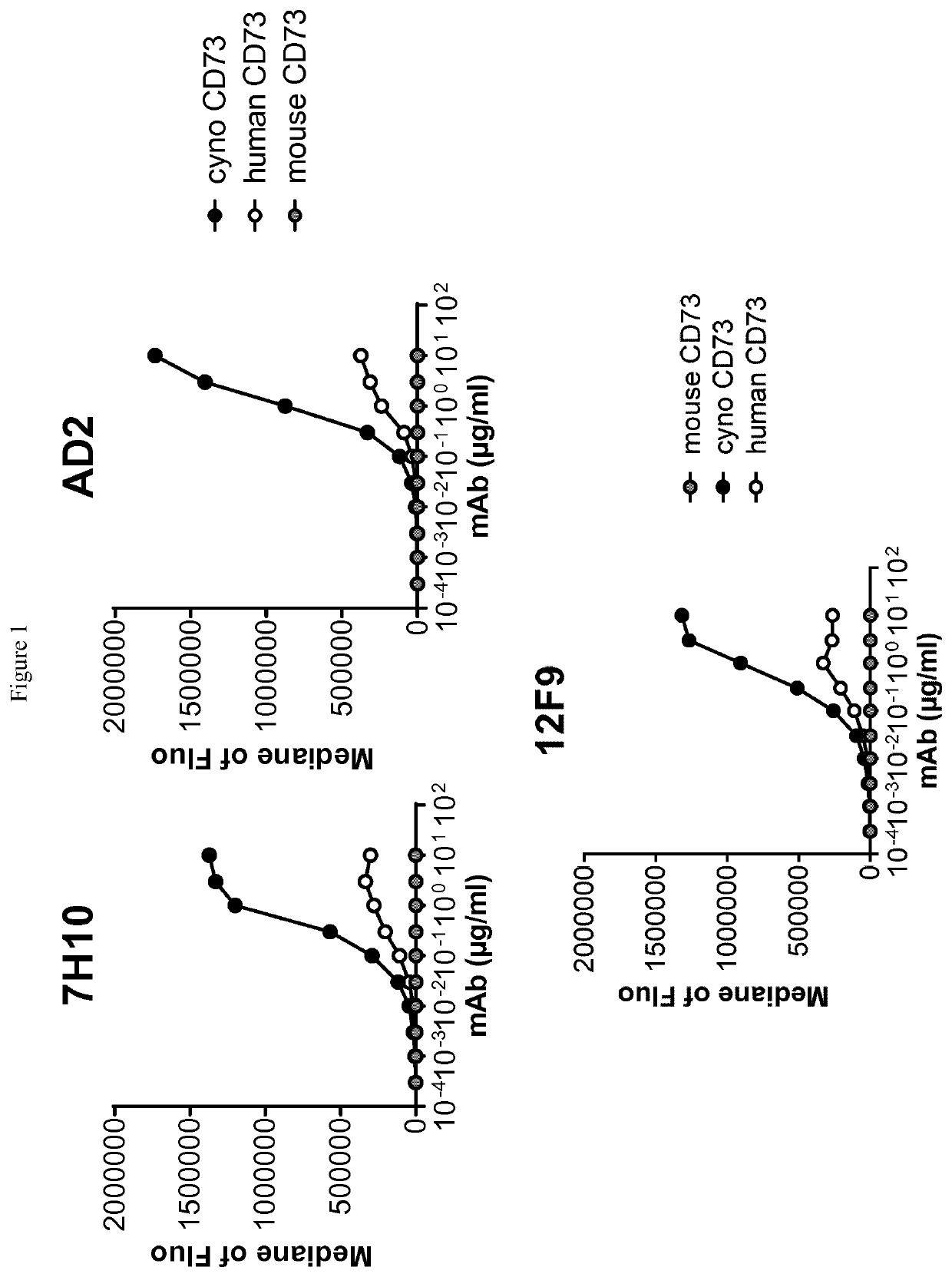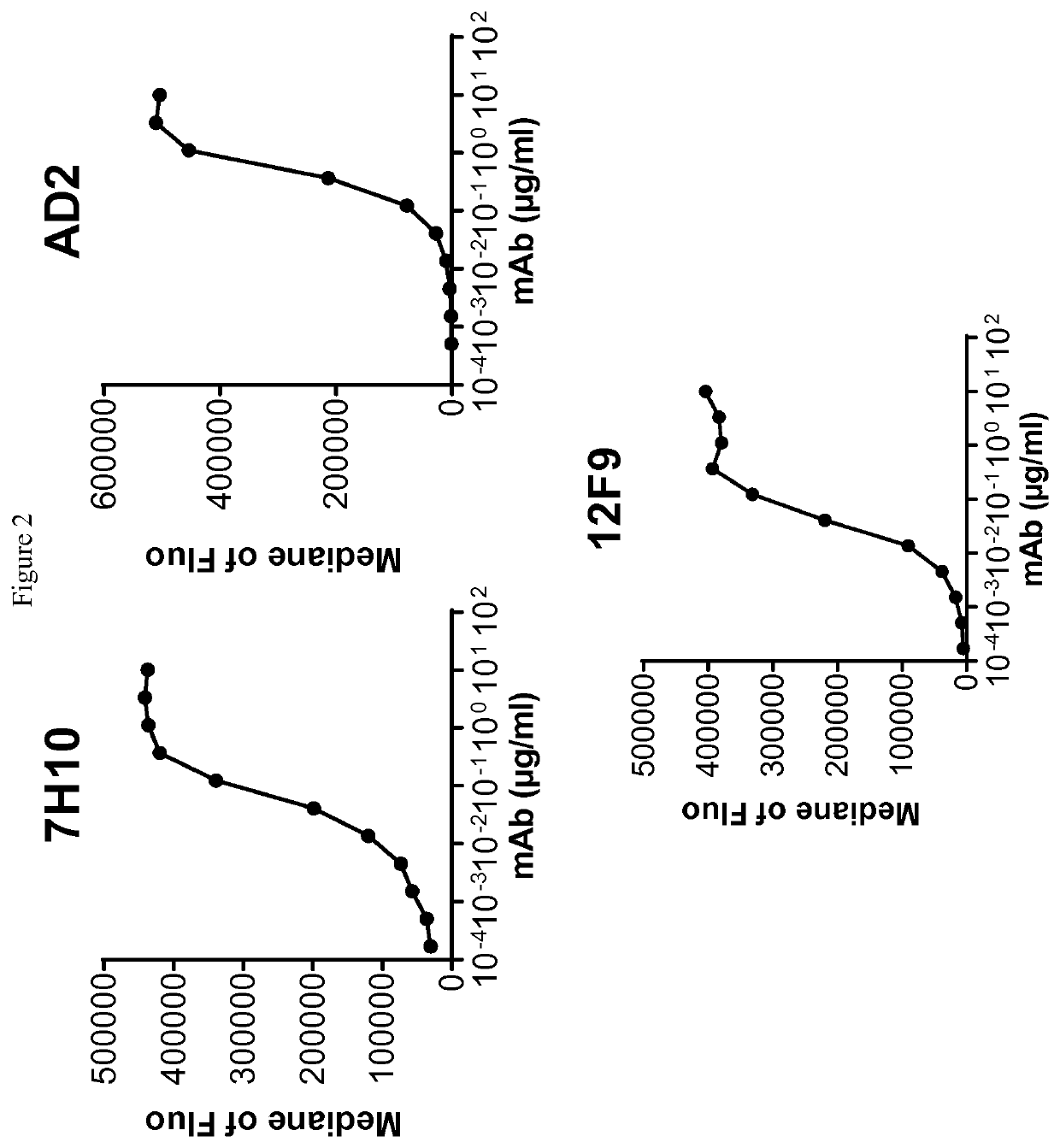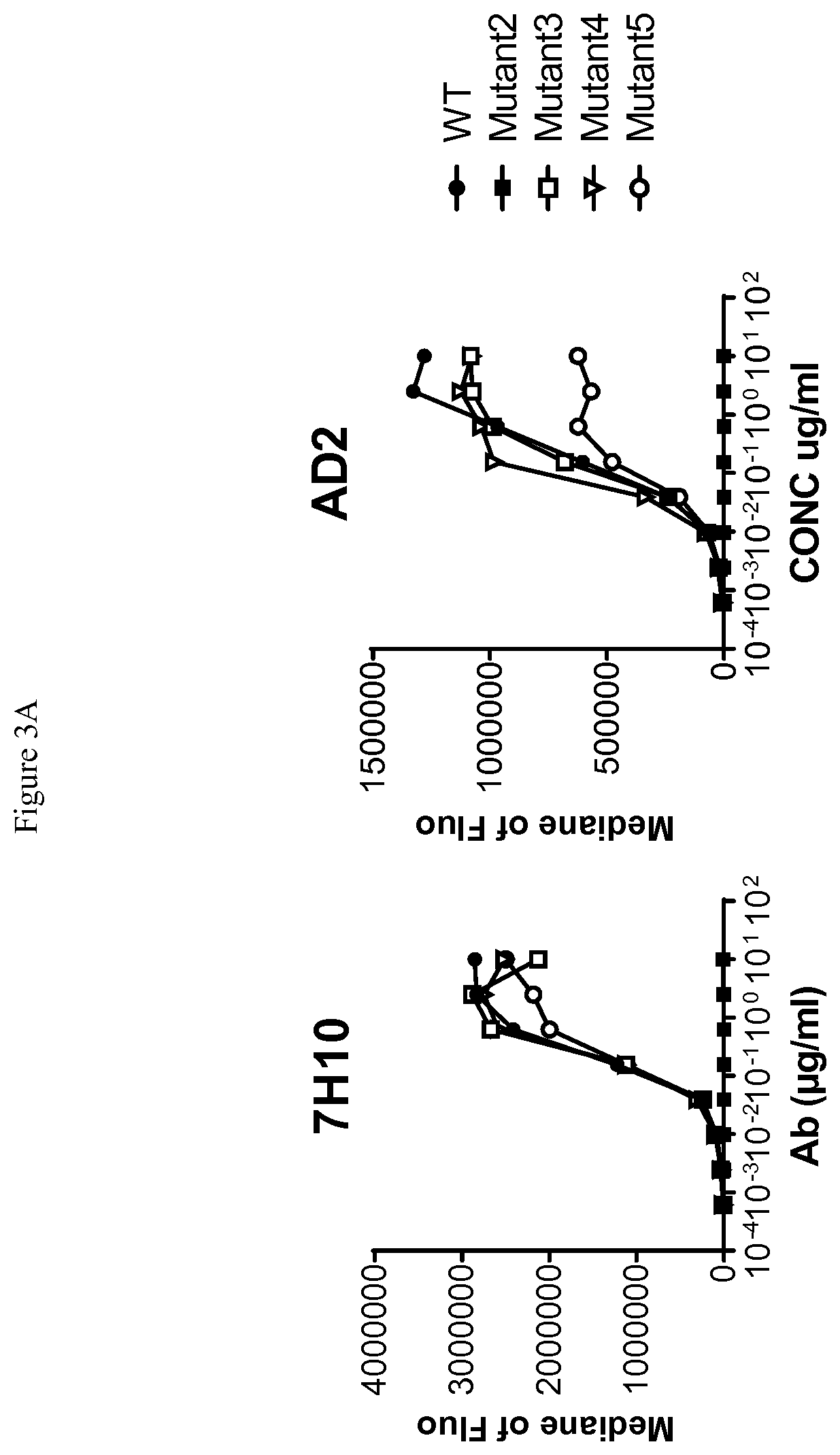CD73 blocking agents
a cd73 and anti-tumor technology, applied in the field of anti-tumor compounds, can solve the problems of inability to fully understand the activity required of an agent to target cd73 in vivo, difficulty in separating any potential blocking effect from fc-expressing cell-mediated effects, and inability to fully understand the mechanism of action of antibodies, etc., to achieve the effect of neutralizing the enzymatic activity of cd73, enhancing t cell proliferation
- Summary
- Abstract
- Description
- Claims
- Application Information
AI Technical Summary
Benefits of technology
Problems solved by technology
Method used
Image
Examples
example 1
n of New Anti-huCD73 Antibodies
[0257]To obtain anti-human CD73 antibodies, Balb / c mice were immunized with a recombinant human CD73-His extracellular domain recombinant protein (cloned and produced at Innate Pharma as described below). Mice received one primo-immunization with an emulsion of 50 μg CD73 protein and Complete Freund Adjuvant, intraperitoneally, a 2nd immunization with an emulsion of 50 μg CD73 protein and Incomplete Freund Adjuvant, intraperitoneally, and finally a boost with 10 μg CD73 protein, intravenously. Immune spleen cells were fused 3 days after the boost with X63.Ag8.653 immortalized B cells, and cultured in the presence of irradiated spleen cells. Hybridomas were plated in semi-solid methylcellulose-containing medium and growing clones were picked using a clonepix 2 apparatus (Molecular Devices).
[0258]Primary screen: Supernatant (SN) of growing clones were tested in a primary screen by flow cytometry using parental and huCD73-, cynoCD73- or moCD73-expressing ...
example 2
n of Soluble CD73 Blockade
[0267]The ability of anti-CD73 antibodies to block enzymatic activity of CD73 was evaluated as described in Sachsenmeier et al. (J Biomol Screening, 2012). Briefly, 500 ng / ml of recombinant human CD73-his were incubated in white 96W flat bottom microplates in presence of dose-range of anti-CD73 or isotype control Abs. Plates were incubated for 1 h at 37° C. 12.5 μM ATP and 125 μM AMP were added to each well and plates are incubated at 37° C. for 30 supplemental minutes. Luciferase / luciferin-containing Cell Titer Glo (Promega) is added into wells, plates were incubated for 5 minutes at RT in the dark and emitted light is measured using an Enspire apparatus (Perkin Elmer).
[0268]Excess of AMP is known to block ATP-dependent luciferase activity. Addition of CD73 that cleaves AMP into adenosine+inorganic phosphate restores luciferase activity and light emission. Thus, antibodies that block enzymatic activity of CD73 will diminish light emission.
[0269]The percent...
example 3
metry Titration
[0280]Human-, cynomolgus- and mouse-CD73-expressing cell lines or human MDA-MB-231 breast adenocarcinoma that endogenously expresses CD73 were used to evaluate ability of anti-CD73 antibodies to bind human CD73 and to cross-react on cynomolgus and / or mouse CD73. 105 cells resuspended in PBS / 0.2% BSA / 0.02% NaN3 (named “staining buffer”) are distributed into round bottom 96W-microplates. Dose-range of anti-CD73 antibodies was added to the plates and cells are incubated for 45 min at 4° C. Cells were washed three times in staining buffer by spinning plates at 400 g for 3 min at 4° C. PE-coupled goat anti-mouse or goat anti-human IgG Fc fragment secondary antibodies (Beckman Coulter) diluted in staining buffer were added to the cells and plates are incubated for 30 additional minutes at 4° C. Cells were washed three times as described above and analyzed on an Accury C6 flow cytometer equipped with an HTFC plate reader.
[0281]Median of fluorescence vs. antibodies concentrat...
PUM
| Property | Measurement | Unit |
|---|---|---|
| concentration | aaaaa | aaaaa |
| pH | aaaaa | aaaaa |
| concentration | aaaaa | aaaaa |
Abstract
Description
Claims
Application Information
 Login to View More
Login to View More - R&D
- Intellectual Property
- Life Sciences
- Materials
- Tech Scout
- Unparalleled Data Quality
- Higher Quality Content
- 60% Fewer Hallucinations
Browse by: Latest US Patents, China's latest patents, Technical Efficacy Thesaurus, Application Domain, Technology Topic, Popular Technical Reports.
© 2025 PatSnap. All rights reserved.Legal|Privacy policy|Modern Slavery Act Transparency Statement|Sitemap|About US| Contact US: help@patsnap.com



